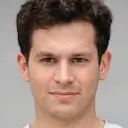How to Choose the Best Video Format for Your Content
Editing stunning videos is just the start—making sure your audience enjoys smooth playback is just as important. Picking the right video format affects the quality, compatibility, and file size of your videos.
This guide covers the most common video formats, their pros and cons, and how to select the best option for your needs, whether uploading, streaming, or storing your videos.
Why Are There So Many Video Formats?
Today, anyone can create and share high-quality video content. But with many video formats available, choosing the right one can feel overwhelming.
- Different platforms and devices require different formats for the best playback.
- Each format has unique features and best-use scenarios.
The most popular video formats include:
- MKV
- AVI
- MP4
- MOV
- WEBM
- FLV
- AVCHD
- WMV
MKV (Matroska Video)
MKV is a free, open-source format that can store multiple video, audio, and subtitle streams in a single file.
Pros
- Holds several video, audio, and subtitle tracks together.
- Supports many codecs, making it flexible (Windows added support in 2014).
Cons
- Streaming MKV files can be difficult on most platforms.
- Many users find it less user-friendly than MP4 or AVI.
AVI (Audio Video Interleave)
AVI has been around since 1992 and is known for its wide compatibility, supporting Windows, macOS, Linux, and many browsers.
Pros
- Supported by most operating systems.
- Popular video cameras save in AVI format (was a default for years).
- File compression using AVI codecs keeps most of the quality.
Cons
- Uncompressed AVI files are very large.
- Requires the same codec for playback as used during encoding.
- Not recommended by platforms like YouTube (preferred: MP4).
MP4 (MPEG-4 Part 14)
MP4 is perhaps the most widely supported format. Developed by the Moving Picture Experts Group (MPEG), it’s used for both video and audio streaming across the web.
Pros
- Supported by almost all media players (VLC, iTunes, Windows Media Player).
- Preferred by YouTube and most social platforms.
- Supports closed captions and subtitles easily (closed captioning services and subtitling services benefit from this).
- Efficient compression with little quality loss.
- Supports 3D content for presentations and animations.
Cons
- Some video editors crash when importing MP4 files.
- May not be ideal for editing heavy video files.
MOV (QuickTime File Format)
MOV, created by Apple for QuickTime, is a high-quality format that also uses MPEG-4 codecs.
Pros
- User-friendly and great for beginners and professionals alike.
- Stores video, audio, images, text, and subtitles.
- Compatible with many editing programs.
Cons
- Files tend to be large compared to MP4 and AVI.
- Not always the best for when storage space is limited.
WEBM
Developed by Google, WEBM is a royalty-free format designed for HTML5 video streaming.
Pros
- Open-source and free to use.
- Supported natively by modern browsers like Chrome, Firefox, and Edge.
- Good for online streaming with minimal lag.
Cons
- Decreasing popularity as new formats emerge (Statista, 2023).
- Limited support on some devices.
FLV (Flash Video)
FLV became popular in the early 2000s for delivering video over the web, especially on YouTube.
Pros
- Allows for interactive content and simple web-based games.
Cons
- Declining support as Flash has been discontinued.
- Creation and conversion can be slow and pricey compared to other formats.
AVCHD (Advanced Video Coding High Definition)
AVCHD was designed for high-definition video recording, especially in professional cameras.
Pros
- Supports full HD (1080p) and high frame rates.
- Works well in professional video editors.
- Supported by brands like Sony and Canon.
Cons
- Cannot handle 4K video.
- Not practical for everyday use due to larger file sizes and slower file transfers.
WMV (Windows Media Video)
WMV is optimized for Windows and is commonly used for streaming and sharing small videos.
Pros
- Shrinks file sizes for easy email and upload.
- Works natively with Microsoft products (like PowerPoint).
Cons
- Noticeable quality loss during compression.
- Poor compatibility outside of Windows systems.
Choosing the Right Video Format
Your choice depends on how you plan to use and share the video. Consider these scenarios:
Uploading and Streaming Online
- MP4 is best for social media (Facebook, Instagram, Twitter) and YouTube.
- Heavier formats like AVI or MOV can be used, but may require higher bandwidth.
- For websites, WEBM is supported on most modern browsers.
Recording and Storage
- Choose MKV or AVCHD for high-quality archival footage.
- Uncompressed formats are best for retaining original data.
Editing and Post Production
- MP4, MOV, MKV, and WMV are solid choices for editing.
- Convert your files (automated transcription and AI transcription can help make content more accessible).
Summary: Make the Right Choice for Your Project
No single video format works best for every situation. You need to consider:
- Your distribution channel (YouTube, email, social media, or website)
- File size and storage needs
- Intended quality and ease of editing
- Device and browser compatibility
Explore your options before converting or saving your video. For even more value, consider adding captions or translations using professional transcription services. GoTranscript offers a full range of solutions including subtitling, audio translation, and transcription proofreading services. Save time, improve accessibility, and reach a wider audience. Order transcription or order captions today to make your content shine on any platform.



















 Verified Order
Verified Order